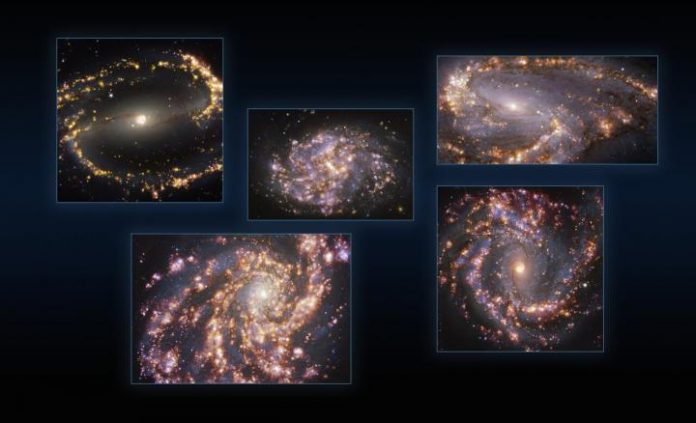
The European Southern Observatory’s Very Large Telescope (ESO’s VLT) has captured new images of nearby galaxies, allowing scientists to locate the exact locations of young stars
The new observations were created by combining images from the ESO telescope with data from the Atacama Large Millimeter/submillimeter Array (ALMA).
While astronomers understand that stars are born in clouds of gas, the reason why stars are formed is still a mystery.
“There are many mysteries we want to unravel,” commented Kathryn Kreckel from the University of Heidelberg in Germany and PHANGS team member. “Are stars more often born in specific regions of their host galaxies, and, if so, why?
“And after stars are born how does their evolution influence the formation of new generations of stars?”
The team behind both ESO and ALMA are hopeful that their observations will help to dissect what triggers gas to form stars, widening the horizon of what humans understand about celestial bodies with completely new knowledge.
‘We can directly observe the gas that gives birth to stars’
Eric Emsellem, an astronomer at ESO in Germany and lead of the VLT-based observations conducted as part of the Physics at High Angular resolution in Nearby GalaxieS (PHANGS) project, said: “For the first time we are resolving individual units of star formation over a wide range of locations and environments in a sample that well represents the different types of galaxies.
ALMA, which is also located in Chile, is especially well suited to mapping cold gas clouds.
Emsellem and his team have now released their latest set of galactic scans, taken with the Multi-Unit Spectroscopic Explorer (MUSE) instrument on ESO’s VLT in the Atacama Desert in Chile. They used MUSE to trace newborn stars and the warm gas around them.
Emsellem further said: “We can directly observe the gas that gives birth to stars, we see the young stars themselves, and we witness their evolution through various phases.”










